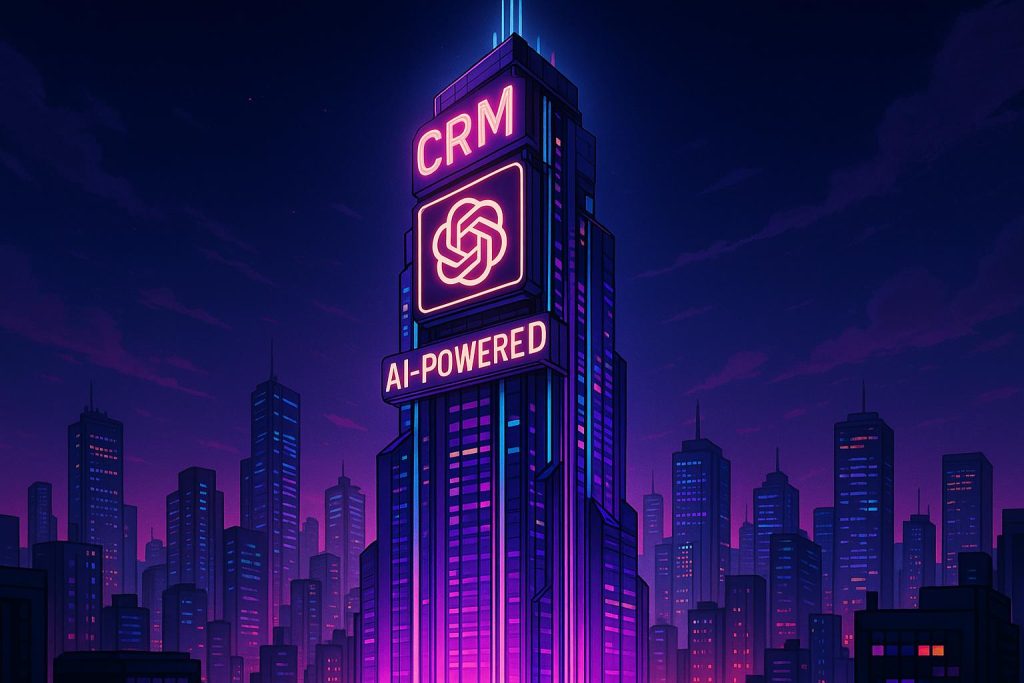Listen to the article
OpenAI’s launch of AI-powered applications directly competing with established CRM and marketing platforms has triggered a sharp decline in SaaS stocks, prompting industry giants like HubSpot and Salesforce to accelerate their AI strategies amidst a rapidly evolving technological landscape.
HubSpot (NYSE: HUBS) experienced a notable stock decline of approximately 7% to 10% on October 1, 2025, driven by investor concerns over OpenAI’s recent strategic pivot into the SaaS enterprise software market. OpenAI, traditionally known for offering foundational AI models, has now launched a suite of AI-powered applications directly competing with established CRM, marketing automation, and sales enablement platforms—areas where HubSpot has been a leading player. This move underscores a shift in the SaaS landscape, where AI-native solutions are rapidly emerging as disruptors to longstanding software models.
OpenAI’s announcement unveiled products like the Inbound Sales Assistant, GTM Assistant, and Tailor Assist—tools designed to automate and enhance sales, customer support, and marketing campaigns via advanced AI capabilities. Tailor Assist, in particular, has been reported to deliver higher lead conversion rates by offering personalised user experiences at the top of the marketing funnel, posing a direct challenge to HubSpot’s core marketing automation services. OpenAI’s strategic approach also includes developing AI agents tailored to sales and coding functions, asserting its ambition to become an “AI agent company.” This culminates OpenAI’s gradual build-up with a secret release of the AI Sales agent earlier in 2025 and signals more product rollouts expected during its DevDay event in early October.
The announcement triggered wider repercussions across the SaaS market, with marketing technology firms like Klaviyo and Braze suffering steep stock declines, alongside DocuSign and Salesforce. HubSpot’s dramatic stock drop signifies market apprehension about OpenAI’s potential to disrupt traditional SaaS incumbents and fuel debate on whether AI-native, DIY solutions built on large language models (LLMs) will replace conventional SaaS platforms. Industry analysts interpret OpenAI’s moves as a paradigm shift, not simply improving existing platforms but rethinking enterprise software from an AI-first foundation.
Despite the immediate negative market reaction, HubSpot’s position is notably resilient. Oppenheimer, a leading financial firm, maintained an “Outperform” rating on HubSpot’s shares, citing the company’s robust gross profit margin of 84.5% and strong 19% year-over-year revenue growth. HubSpot has also aggressively advanced its AI integration strategy, demonstrating a hybrid “human + AI” approach showcased through over 200 new product enhancements revealed at its 2025 INBOUND conference. These include Breeze—a series of intelligent assistants capable of querying CRM data and other sources for fast, citation-backed insights—and Data Hub, an AI-driven evolution of its Operations Hub designed to manage data seamlessly without coding. HubSpot is similarly automating email marketing and sales quoting processes with AI tools, alongside maintaining an experimental budget to fast-track new AI innovations, illustrating its commitment to adaptation.
Salesforce, facing similar pressures, continues to bolster its proprietary AI offerings such as Einstein GPT and Agentforce, pursuing automation and real-time business insights while adjusting price structures to remain competitive. CEO Marc Benioff has framed the AI revolution as an augmentation rather than replacement of traditional SaaS, signalling cautious strategic continuity. Meanwhile, other sector players, including marketing tech companies and contract management firms like DocuSign, are grappling with the heightened competitive avenues opened by OpenAI’s internal toolset expansion.
This AI application incursion fundamentally alters the software industry’s competitive dynamics. OpenAI’s model aims not only to license AI but also to capture direct revenue streams by owning end-to-end AI-powered workflow solutions for business processes. The company’s formidable growth trajectory—projected revenue reaching $3.4 billion in 2025—and partnerships with infrastructure leaders like Nvidia underscore its rapidly advancing market presence. The transition from AI-enhanced software to AI-native solutions promises faster development cycles, autonomous agent capabilities, and deeply embedded AI functionalities that could eclipse conventional SaaS providers.
Such transformations have historical parallels with Microsoft’s bundling of applications within Windows or Apple’s integration of services, indicating a long-term play to control both platform and application layers. OpenAI’s ambitions extend beyond software into hardware with projects on custom AI chips (XPUs), a move towards vertical integration echoing shifts seen during the cloud computing revolution. Concurrently, regulatory scrutiny intensifies, with legal challenges over anti-competitive practices and data privacy underscoring the complex landscape AI companies must navigate.
Looking ahead, the SaaS market faces rapid AI-driven evolution. The near term involves aggressive AI feature adoption and competition, while the longer-term outlook anticipates hyper-personalised AI agents becoming ubiquitous in business operations, shifting pricing models, and potentially consolidating market niches into larger AI platforms. Companies that can deliver demonstrable ROI through AI integrations will attract investor confidence. HubSpot’s combination of AI enhancements and developer-friendly connectors positioning it as an “AI-powered customer platform” suggests a proactive stance amid this transition.
For investors, key focus areas include evaluating SaaS firms’ AI integration depth, their ability to articulate clear ROI from AI solutions, data stewardship, and adaptability in a rapidly evolving market. Vigilance towards OpenAI’s developments and broader regulatory movements remains crucial. The unfolding AI application landscape signals not just a technology evolution but a reconceptualisation of enterprise software, with OpenAI’s direct market engagement marking a pivotal moment prompting incumbents like HubSpot to innovate under unprecedented competitive pressure.
📌 Reference Map:
- – Paragraph 1 – [1], [2]
- – Paragraph 2 – [1]
- – Paragraph 3 – [1], [3]
- – Paragraph 4 – [1]
- – Paragraph 5 – [1], [4]
- – Paragraph 6 – [1]
- – Paragraph 7 – [1]
- – Paragraph 8 – [1], [3]
Source: Fuse Wire Services


